Break It Down: Broncos grind out a win

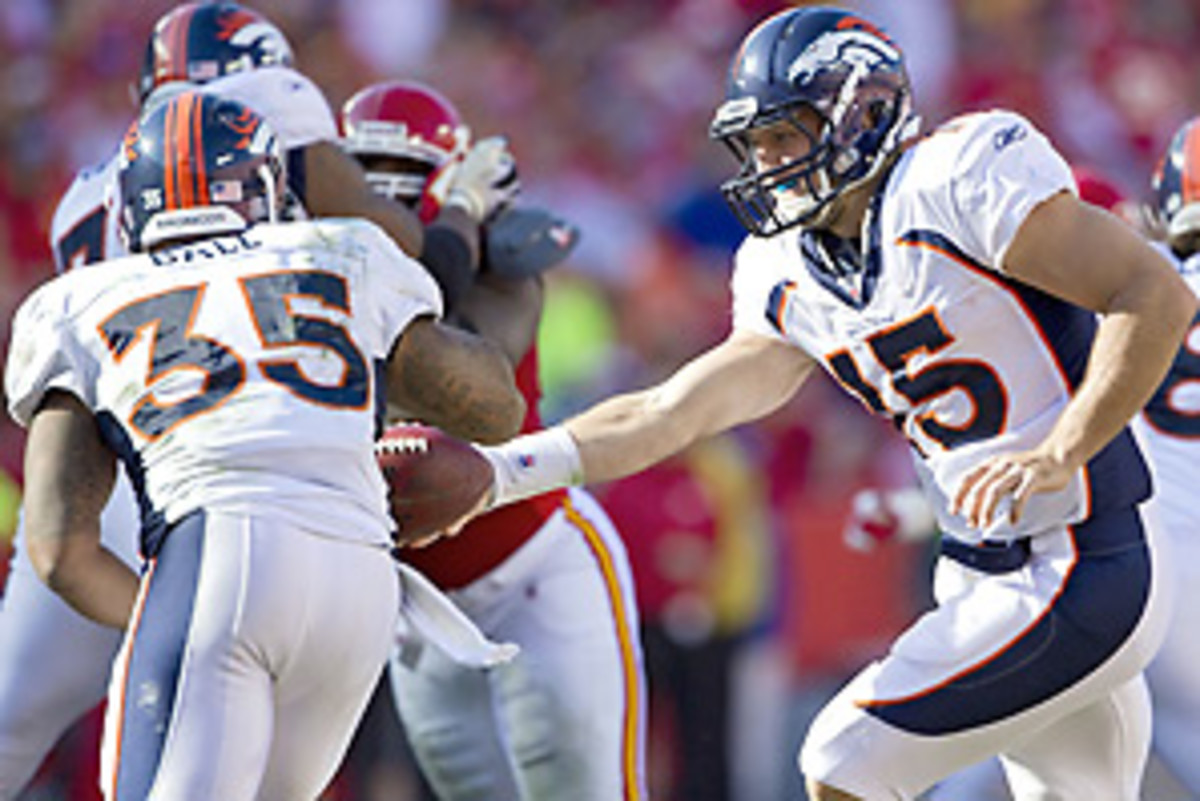
Solid blocking led to the Broncos' success in their unusually run-heavy offense Sunday against the Chiefs. (ZUMAPRESS.com)
In Break It Down, I will go back and analyze the Xs and Os of a notable play or performance.
Tim Tebow and the Denver Broncos are running an offense that would make the Walter Camps, Fritz Crislers and Knute Rocknes of the world proud, single-handedly reversing the NFL's trend toward wide-open passing attacks.
The Broncos' numbers from Sunday are incredible: Eight passes, two completions and 55 run plays. For the second straight week, that formula worked, as Denver followed up its shocking win over Oakland by silencing the Chiefs in Kansas City.
Here's a look at how they got it done:
Denver's very first play from scrimmage set the tone for the rest of the game, both for the Broncos' offense and the Chiefs' defense. Denver lined up in about as run-friendly a formation as you're going to see, short of a goal-line offense, with two tight ends -- Daniel Fells on the left end of the line; Dante Rosario offset on the far right -- and an extra tackle, Chris Clark, just in front of Rosario.
The Chiefs know a run is coming. They're in their 3-4 look, with a pair of linebackers down on the line of scrimmage and safety Jon McGraw pulled up tight.
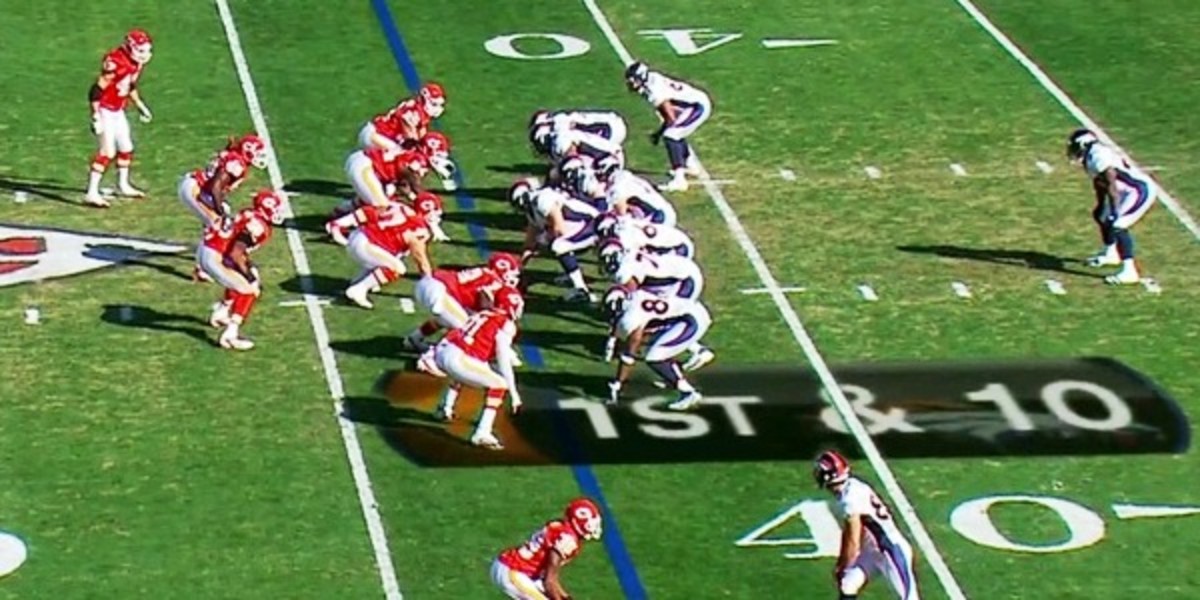
There's no deception here, no misdirection in what Denver runs. It's a simple handoff to Willis McGahee, and the Broncos' blockers simply beat the Chiefs' defenders.
Two boxes below: The top left one highlights that extra tackle, Clark, who has gotten beyond the second level -- essentially where the linebackers are -- to take McGraw out of the picture. The center box, meanwhile, highlights Zane Beadles, who's able to get a hat on a linebacker.
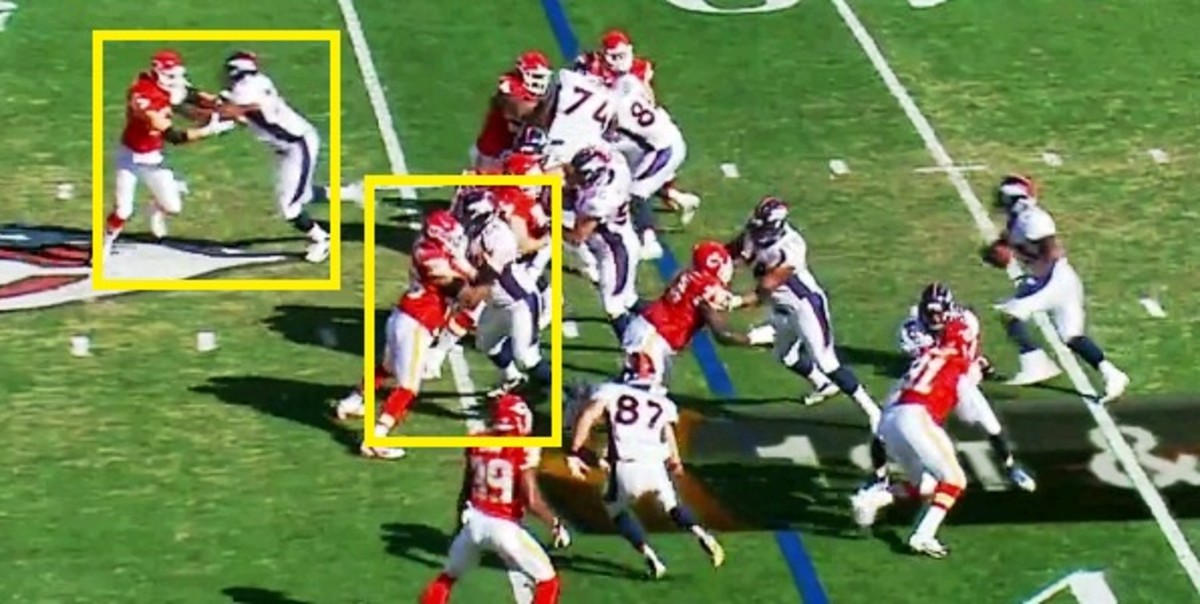
There is absolutely no push from the Chiefs. McGahee hits the hole untouched and gets 12 yards. Things wouldn't always be this easy for Denver Sunday, but right out of the gate, we could get the sense that the Broncos could make their power-run game work.
Denver's first drive culminated with a 7-yard Tim Tebow run on 2nd-and-goal. Tebow's in the shotgun for the play, with four wide receivers and a tight end in the formation. Even with the Broncos showing a passing look, Kansas City plays for the run, with five defenders up on the line again, plus two linebackers in the box.
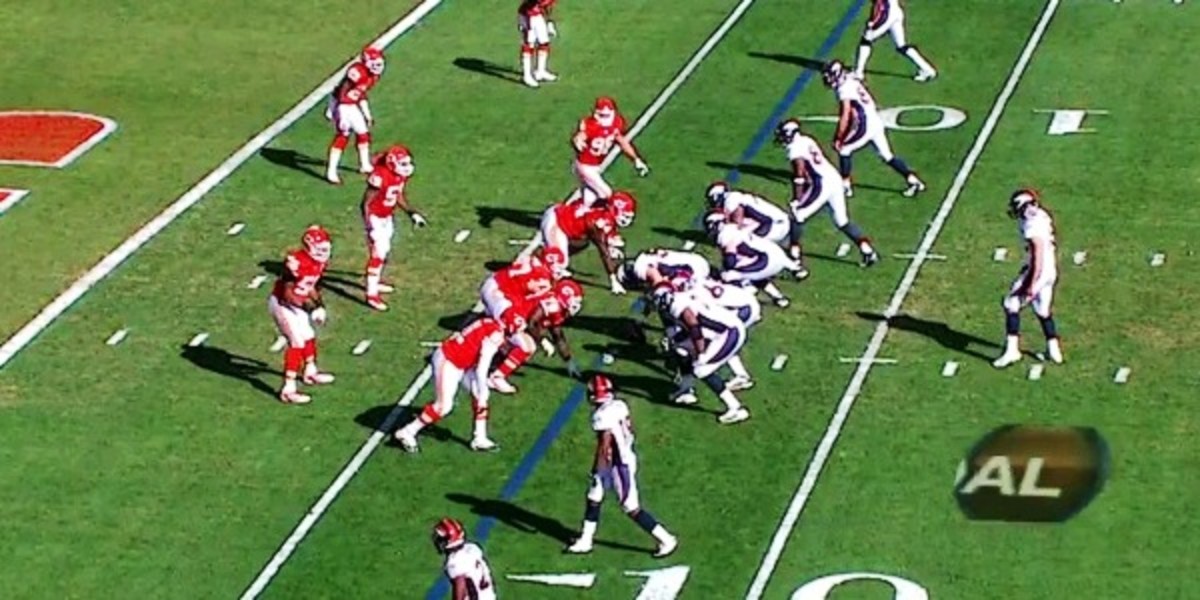
Had Denver opted for a pass, it would have been met with the bare minimum coverage in the secondary. It was a run, though, with Tebow keeping on a QB draw.
And Tebow gives us a sense for what he can do, on this play. Unlike the McGahee run above, the Chiefs are in good position when Tebow gets to the line of scrimmage.
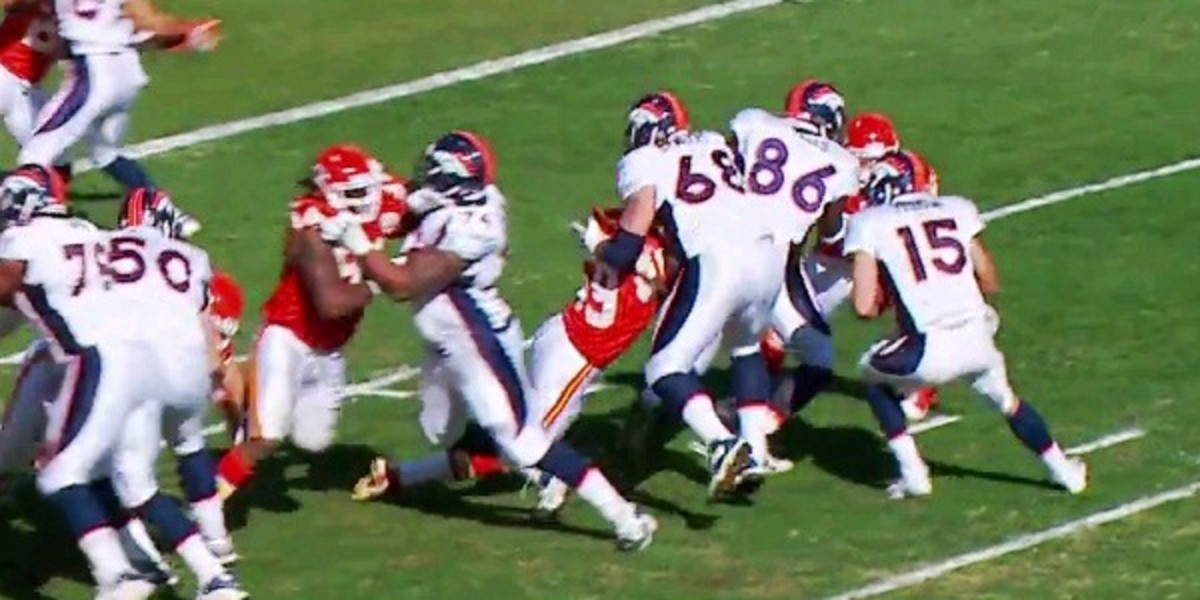
But Tebow waits for those blocks in front of him to set up, splits the two K.C. defenders, then jukes around a third to get into the end zone.
Making Denver's ground-game dominance even more impressive Sunday was that its top two running backs left the game with injuries -- Willis McGahee on the Broncos' first drive with a hamstring pull, then Knowshon Moreno moments later with an apparent knee injury.
Those setbacks easily could have forced Denver to adjust its strategy. But instead, Lance Ball stepped in and carried it 30 times for 98 yards, while the Broncos' O-line kept mashing the Chiefs.
Here's one example of a successful Ball run, and you'll see almost the exact same things we saw on that McGahee burst to start the game. This time, the Broncos have two wide receivers on the field but still employ a seven-man front.
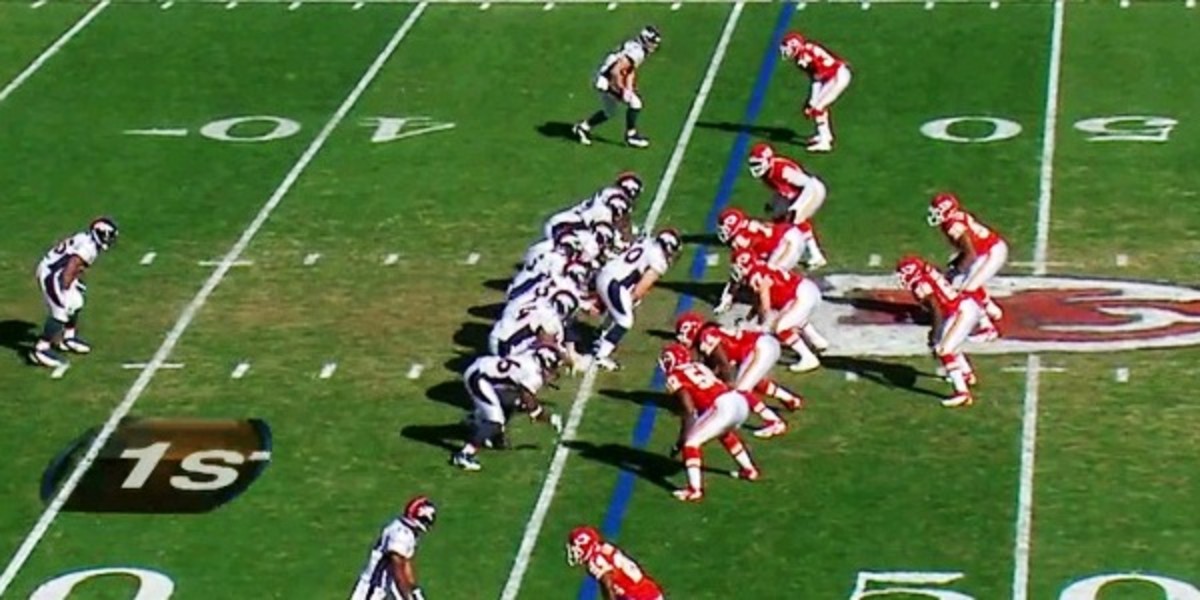
And again, the Chiefs are looking run -- and why wouldn't they? Tebow didn't complete a pass until the third quarter -- with five defenders pulled down on the line, two linebackers tight and their corners in press coverage. This is, more or less, what you'll see on most given plays anyway from Kansas City's 3-4 attack, but the proximity of players to the line of scrimmage plus their initial push forward means they're in a run defense.
Just like on that McGahee run, when the Broncos managed to get their linemen to the second level, Denver blows Kansas City off the line. They manage to dominate the Chiefs' linemen so much in one-on-one battles, that Beadles is able to advance to the linebackers again.
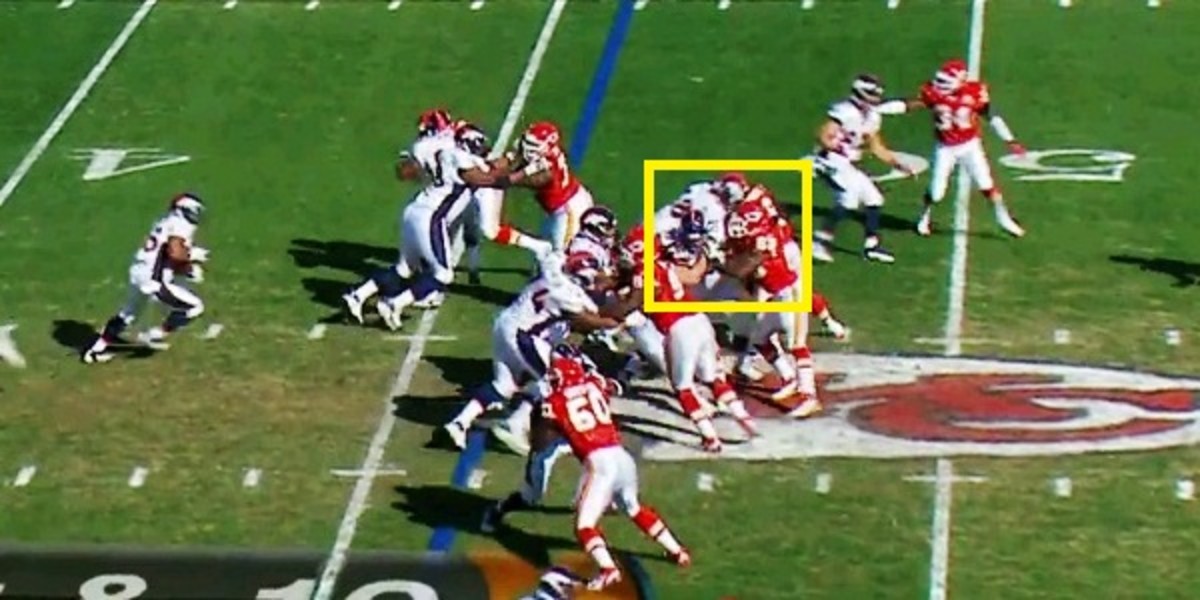
Ball smashes through the hole for an 8-yard gain.
And then there's that increasingly-famous read-option play that's so popular in college -- Florida ran it with Tebow, of course, but it's a staple of the spread offense favored by Rich Rodriguez and many others now.
Basically, it's a run play where the quarterback decides who will carry the ball. The example below gives us a pretty good look at it. Tebow and Ball line up in the backfield in a shotgun look, with Ball to Tebow's right. Ball comes forward as if he's taking a handoff heading to his left, where a wall of Denver blockers is pulling.
This is when it's on Tebow to make a decision: Let Ball run it or keep it for himself. The tipping point for his call is where the defensive end (in this case, Tyson Jackson) heads.
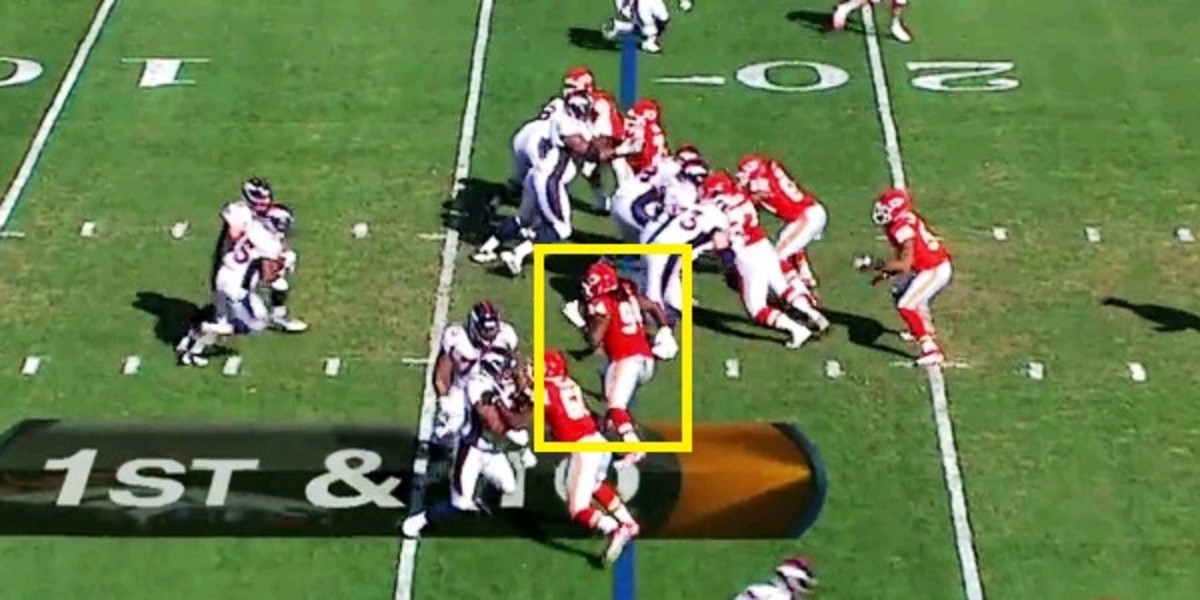
Jackson breaks toward Ball, opening up that huge gap between the left side of Denver's line and what's left on the right side of the field.
Tebow keeps it and runs right at the spot Jackson vacated.
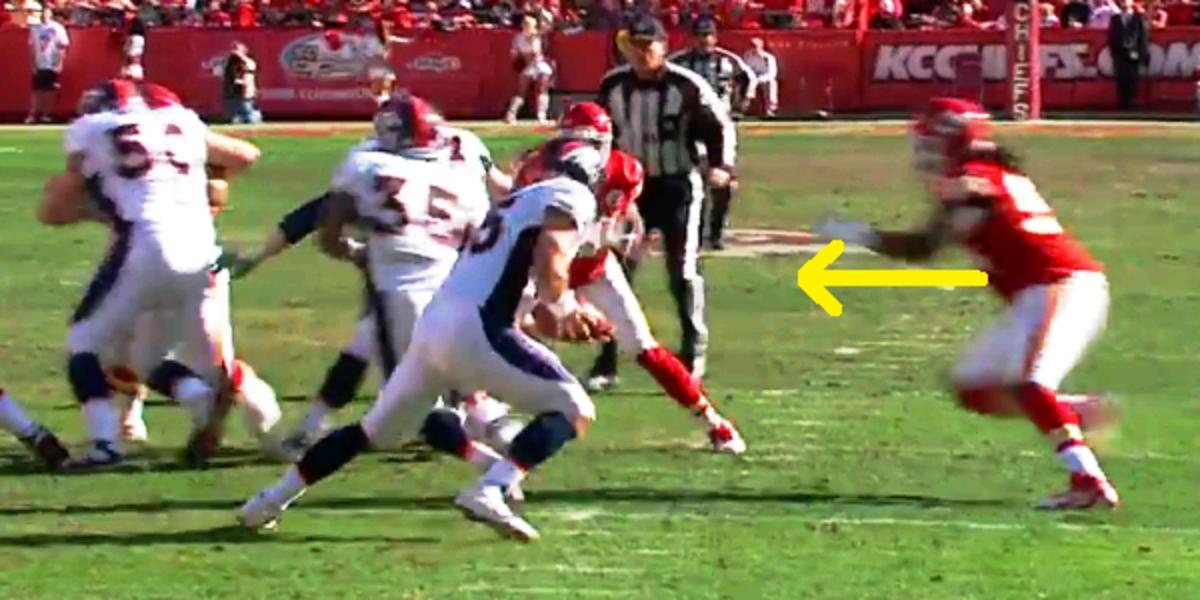
Tebow gets 19 yards downfield before he's shoved out of bounds. The read-option is difficult enough to defend when it's run well, period, let alone for a defense that has never seen it before.
But everything Denver did Sunday goes back to the play of the improving offensive line -- up to, and including, Tebow's second completion of the day, a 56-yard scoring strike to Eric Decker that put Denver up 17-7 and broke Kansas City's back.
This is what it looked like in Denver's backfield as Tebow went to throw:
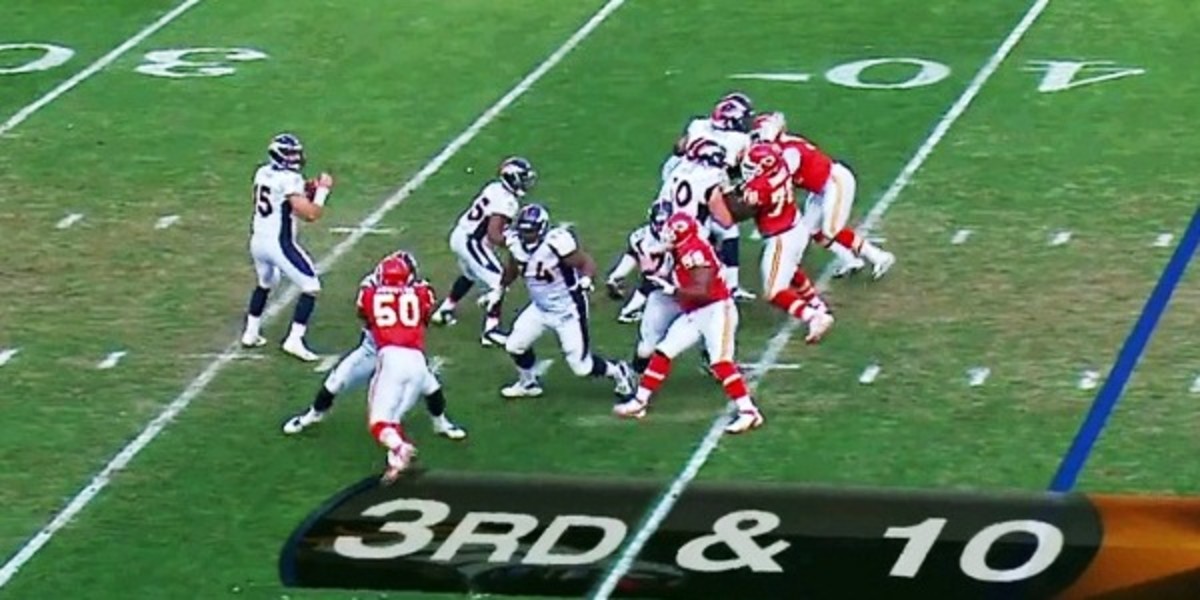
And this is what it looked like downfield as Tebow let the pass go:
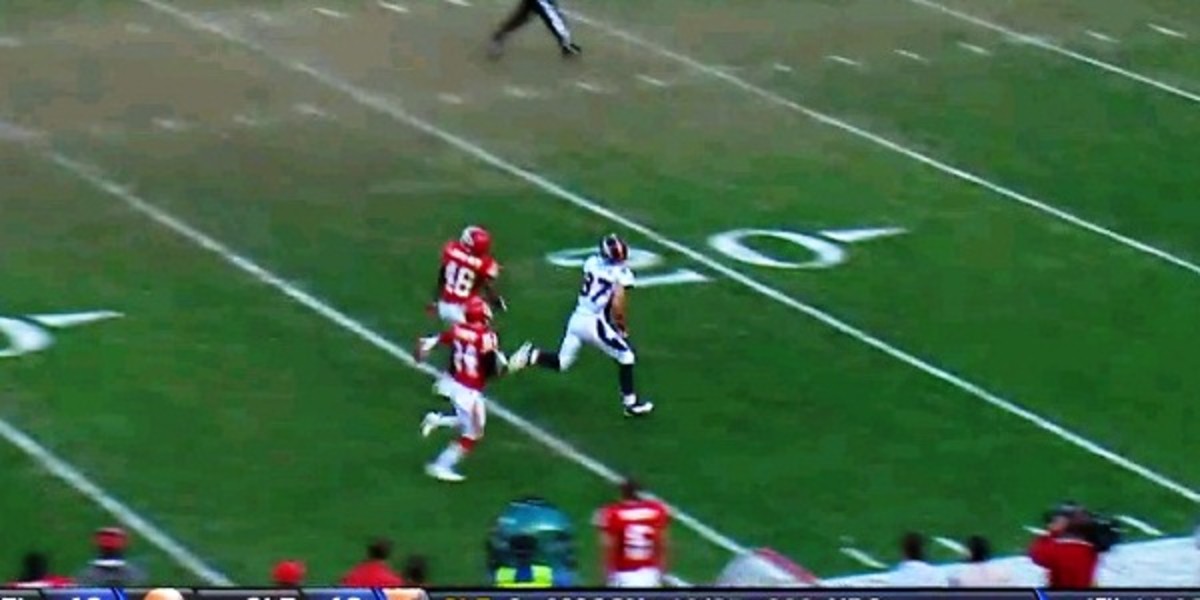
I'll hand out the praise first: This is a spectacular pass by Tebow and Decker does a nice job getting behind the defense, making the catch and scoring.
This is a pretty substantial breakdown by the Chiefs' defensive secondary, though -- the safety, Reshard Langford, cannot let a receiver simply run past him on 3rd-and-10 in that clutch situation.
But of course, this all started with the offensive line. Tebow could have held an Occupy Kansas City rally in the pocket, the big boys up front gave him so much time. For the unique things Tebow brings to the table and the impressive contribution Denver is getting from its running backs, nothing would be clicking like it is now without a tremendous effort from the offensive line.
